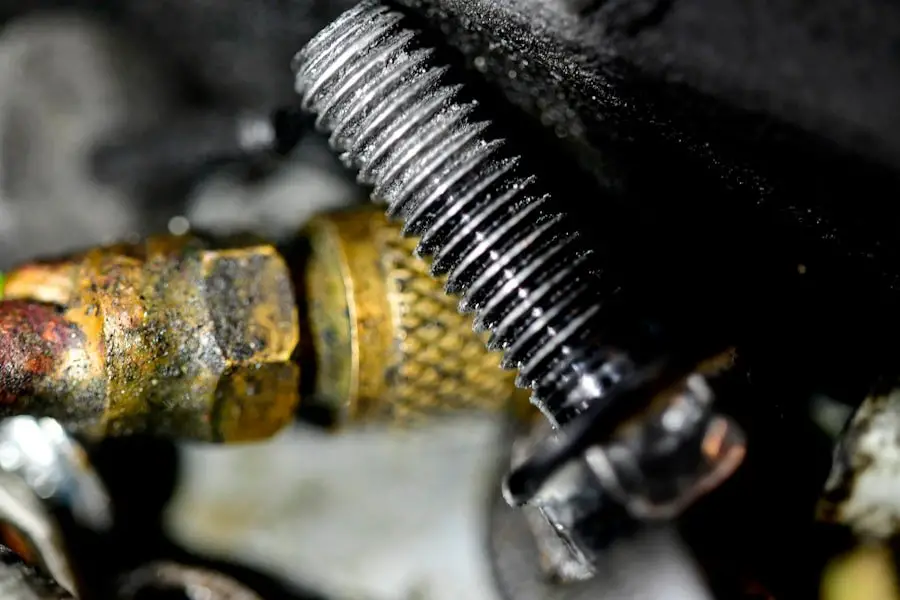When it comes to basic hand tools, hammers, screwdrivers, and pliers are essential for any DIY enthusiast or professional tradesperson. Hammers come in various types, including claw hammers, ball-peen hammers, and sledgehammers, each designed for specific tasks. Claw hammers are commonly used for driving and removing nails, while ball-peen hammers are ideal for shaping metal and closing rivets.
Sledgehammers, on the other hand, are heavy-duty tools used for demolition and driving stakes. Screwdrivers are available in different types and sizes, including flathead and Phillips head screwdrivers. They are used for tightening or loosening screws in various materials such as wood, metal, or plastic.
Pliers are versatile hand tools that come in different variations, such as needle-nose pliers, cutting pliers, and locking pliers. They are used for gripping, bending, and cutting wires or other materials. In addition to their basic functions, hammers, screwdrivers, and pliers can also be used in creative ways.
For example, a hammer can be used to tap wood joints together or to shape metal objects. Screwdrivers can be used to open paint cans or to create indentations for starting screws. Pliers can be used to pull out nails or to hold small objects in place while working on them.
These tools are essential for any toolbox and can be used for a wide range of tasks, making them indispensable for any DIY project or professional trade work.
Key Takeaways
- Basic hand tools like hammers, screwdrivers, and pliers are essential for any DIY project.
- Power tools such as drills, saws, and sanders can make tasks easier and more efficient.
- Measuring and marking tools like tape measures, levels, and squares are crucial for accuracy in construction and carpentry.
- Safety equipment like goggles, gloves, and masks are necessary to protect yourself while working with tools.
- Specialty tools like pipe wrenches, tile cutters, and wire strippers are designed for specific tasks and materials.
Power Tools: Drills, Saws, and Sanders
Drills: Versatility and Convenience
Drills are versatile tools that can be used for drilling holes in various materials such as wood, metal, or plastic. They come in different types, including corded drills and cordless drills, each with its own advantages. Corded drills provide continuous power and are ideal for heavy-duty tasks, while cordless drills offer more mobility and convenience.
Saws: Cutting with Precision
Saws are another essential power tool that comes in various types, including circular saws, jigsaws, and reciprocating saws. Circular saws are ideal for making straight cuts in wood or metal, while jigsaws are perfect for cutting curves and intricate shapes. Reciprocating saws are designed for demolition work and cutting through tough materials such as metal pipes or tree branches.
Sanders: Smoothing Out Rough Surfaces
Sanders are used for smoothing out rough surfaces and come in different types such as belt sanders, orbital sanders, and random orbital sanders. They are essential for preparing surfaces for painting or finishing. Power tools offer a level of efficiency and precision that is unmatched by traditional hand tools. Drills can quickly create holes of various sizes, while saws can make precise cuts with ease. Sanders can smooth out rough surfaces in a fraction of the time it would take with hand sanding. These power tools are essential for any woodworking or construction project and can greatly improve the quality and speed of the work being done.
Measuring and Marking Tools: Tape Measures, Levels, and Squares

Accurate measurements and markings are crucial for any construction or DIY project, making measuring and marking tools essential for any toolbox. Tape measures are used to measure distances and come in various lengths and materials such as steel or fiberglass. They are essential for determining the dimensions of materials and ensuring accurate cuts and placements.
Levels are used to ensure that surfaces are straight and even, with different types such as spirit levels and laser levels available. They are essential for hanging shelves, installing cabinets, or laying tiles. Squares are used for marking right angles and come in different types such as framing squares, combination squares, and speed squares.
They are essential for ensuring that corners are square and that cuts are made at the correct angles. In addition to their basic functions, measuring and marking tools can also be used in creative ways. For example, a tape measure can be used as a makeshift straight edge for drawing lines or as a guide for making curved cuts.
Levels can be used to check the alignment of machinery or furniture, ensuring that everything is perfectly level. Squares can be used to create precise markings for intricate woodworking projects or to check the squareness of existing structures. These tools are essential for ensuring accuracy and precision in any construction or DIY project.
Safety Equipment: Goggles, Gloves, and Masks
| Item | Usage | Material | Size |
|---|---|---|---|
| Goggles | Eye protection | Plastic | One size fits all |
| Gloves | Hand protection | Latex, Nitrile, Vinyl | Various sizes available |
| Masks | Respiratory protection | Non-woven fabric | One size fits all |
Safety should always be a top priority when working with tools and equipment, making safety equipment essential for any workshop or job site. Goggles are essential for protecting the eyes from dust, debris, or flying particles that can cause injury. They come in different types such as safety goggles and impact-resistant goggles, each designed for specific tasks or environments.
Gloves are essential for protecting the hands from cuts, abrasions, or chemical exposure. They come in various materials such as leather, rubber, or synthetic fabrics and are designed for different levels of protection and dexterity. Masks are essential for protecting the respiratory system from dust, fumes, or airborne particles that can cause health issues.
They come in different types such as dust masks, respirators, and full-face masks, each designed for specific levels of protection. In addition to their basic functions, safety equipment can also be used to improve comfort and productivity. For example, goggles can also protect the eyes from glare when working outdoors or from harsh lighting in indoor environments.
Gloves can provide additional grip when handling slippery or heavy materials, improving safety and reducing the risk of accidents. Masks can also protect against exposure to allergens or irritants in the air, improving overall health and well-being. Safety equipment is essential for protecting the body from injury or harm while working with tools and equipment.
Specialty Tools: Pipe Wrenches, Tile Cutters, and Wire Strippers
Specialty tools are designed for specific tasks or materials and can greatly improve efficiency and precision in certain projects. Pipe wrenches are essential for working with plumbing systems and are designed to grip and turn pipes or fittings with a secure grip. They come in different types such as adjustable pipe wrenches and chain pipe wrenches, each designed for specific pipe sizes or applications.
Tile cutters are essential for cutting ceramic or porcelain tiles with precision and come in different types such as manual tile cutters and electric tile saws. They are essential for installing tiles in bathrooms, kitchens, or outdoor spaces. Wire strippers are essential for removing insulation from electrical wires without damaging the conductors underneath.
They come in different types such as manual wire strippers and automatic wire stripping machines, each designed for specific wire sizes or volumes. Specialty tools offer a level of precision and efficiency that is unmatched by traditional hand tools. Pipe wrenches can securely grip pipes without damaging them, ensuring that fittings are properly installed without leaks.
Tile cutters can make clean cuts in tiles without chipping or breaking them, ensuring a professional finish in any tiling project. Wire strippers can quickly remove insulation from wires without damaging the conductors underneath, ensuring that electrical connections are secure and reliable.
Organization and Storage: Toolboxes, Workbenches, and Pegboards

Tool Storage Solutions
Toolboxes are a must-have for storing and transporting hand tools safely and conveniently. They come in different types, such as portable toolboxes, rolling toolboxes, and stackable toolboxes, each designed to cater to specific needs or preferences.
Work Surface and Storage
Workbenches are essential for providing a stable surface for working on projects and often come with built-in storage such as drawers or shelves for organizing tools and materials. Additionally, pegboards are great for hanging hand tools on walls, keeping them organized and easily accessible while working.
Customization and Productivity
Toolboxes can be customized with foam inserts or dividers to keep tools organized and prevent damage during transportation. Workbenches with built-in storage can keep tools within reach while working on projects, reducing downtime spent searching for the right tool. Pegboards can provide a visual inventory of tools while keeping them off the work surface, creating more space to work on projects.
Maintenance and Care: Lubricants, Sharpening Stones, and Cleaning Supplies
Proper maintenance and care of tools are essential for ensuring their longevity and performance over time. Lubricants such as oil or grease are essential for keeping moving parts of tools well-lubricated to prevent wear and friction. They come in different types such as penetrating lubricants, multi-purpose lubricants, and dry lubricants, each designed for specific applications or materials.
Sharpening stones are essential for maintaining the sharpness of cutting tools such as knives, chisels, or plane blades. They come in different types such as water stones, oil stones, and diamond stones, each designed for specific levels of abrasiveness or fineness. Cleaning supplies such as solvents or degreasers are essential for removing dirt, grime, or rust from tools to keep them clean and functional.
In addition to their basic functions, maintenance and care products can also improve the performance of tools over time. Lubricants can prevent rusting on metal parts of tools while reducing friction during use, extending their lifespan significantly. Sharpening stones can restore the sharpness of cutting edges on tools to ensure clean cuts without tearing or chipping materials.
Cleaning supplies can remove built-up dirt or grime from tools to keep them looking new while preventing corrosion or damage. In conclusion, having a well-rounded collection of tools is essential for any DIY enthusiast or professional tradesperson to tackle a wide range of projects efficiently and effectively. From basic hand tools to power tools to specialty tools, each type serves a unique purpose in completing various tasks with precision and ease.
Additionally, investing in safety equipment is crucial to protect oneself from potential hazards while working with tools and equipment. Proper organization and storage solutions help maintain a clean workspace while improving productivity by keeping tools easily accessible when needed most. Lastly, regular maintenance using lubricants, sharpening stones, and cleaning supplies ensures that tools remain in top condition over time.
By understanding the importance of each type of tool and its role in completing projects successfully along with proper care practices will help individuals build a comprehensive toolkit that will last a lifetime.
If you’re a fan of Taylor Swift’s music, you may be interested in reading about her latest hit “Cruel Summer” breaking records on Billboard’s Adult Pop Airplay chart. Check out the article here to learn more about her success in the music industry.
FAQs
What does “tools not included” mean?
“Tools not included” is a common phrase used to indicate that the necessary tools for a particular task or product are not provided and must be obtained separately.
Why are tools sometimes not included with a product?
There are a few reasons why tools may not be included with a product. It could be to keep the cost of the product lower, to allow the customer to use tools they already have, or to give the customer the flexibility to choose their own preferred tools.
What should I do if the tools are not included with a product?
If the tools are not included with a product, you will need to obtain the necessary tools separately. This may involve purchasing them from a hardware store or using tools you already have at home.
Are there any risks or drawbacks to products that do not include tools?
One potential drawback of products that do not include tools is that customers may need to spend additional time and money to obtain the necessary tools. Additionally, if customers do not have the required tools, they may not be able to use the product as intended.
Can I request the tools to be included with the product?
In some cases, it may be possible to request that the tools be included with the product, especially if the tools are essential for using the product. However, this will depend on the manufacturer or seller’s policies.




















+ There are no comments
Add yours